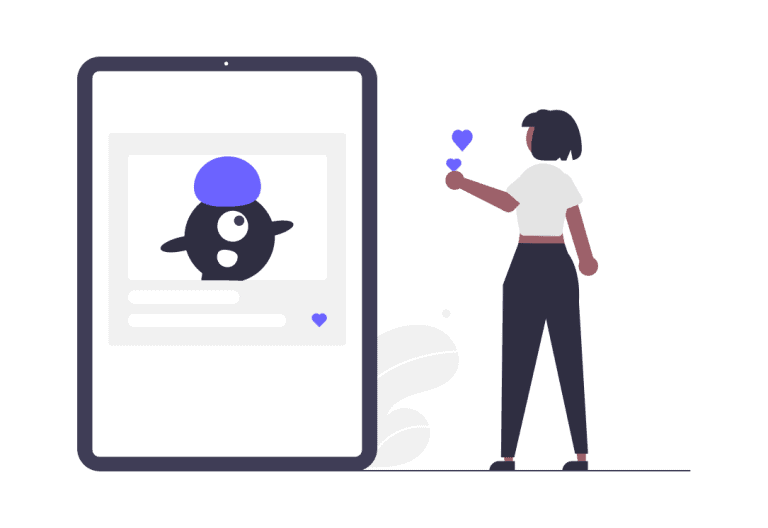Why they’re more than shortcuts—and how smart brands use them to bridge the gap between curiosity and conversion
QR codes have had a strange journey. They started off with a whimper, became a punchline, quietly lingered in the corners of brochures and business cards, and then—overnight—became the default interface for ordering food during a global pandemic.
But the real story isn’t just about menus. It’s about marketing. More specifically, how QR codes went from tech novelty to one of the most versatile and underused tools in modern campaigns.
Fast-forward to 2025, and we’re in a post-skeptic era. Most consumers know what a QR code does. Most smartphones read them instantly, no app required. The friction that used to make them annoying is gone. What’s left is potential—potential that most brands still aren’t taking full advantage of.
Let’s talk about how QR codes work when they work, and why the best marketers today are treating them like digital doorways—not digital duct tape.
From gimmick to gateway: how QR codes earned a second chance
Before we get into strategy, let’s look at the shift. A decade ago, QR codes were often used just because they could be. But their actual value was limited. The average consumer didn’t know what they were for, scanning required extra effort, and marketers often didn’t give a compelling reason to scan in the first place.
Then came a global shift toward touchless experiences. Suddenly, those weird black-and-white squares weren’t optional—they were the only way to access a menu, register for entry, or pay for something without touching a screen. People got used to the behavior. Scanning became normal. Friction dropped. The moment was right—but few marketers moved beyond basic utility. If you’re planning to start an online boutique, QR codes can help you offer a seamless shopping experience from day one.
What changed in 2025 wasn’t the QR code itself. It was our ability to turn it into a full experience: faster smartphones, better mobile design, smarter automation tools, and most importantly—consumer intent.
Now, it’s not enough to slap a QR code onto your flyer and hope someone scans it. The opportunity is to craft a moment that begins with a scan and ends in conversion, insight, or relationship.
The scan is not the goal—the journey is
If there’s one cardinal rule for using QR codes in marketing, it’s this: a QR code is not a call to action. It’s a doorway.
Too many brands stop at the scan. They link it to their homepage. Or a product page. Or worse—nowhere relevant. That’s not a strategy. That’s squandering interest.
The moment someone lifts their phone and points it at your code, they’re giving you something most digital marketers fight tooth and nail for: a qualified signal of attention. Don’t waste it.
A better approach starts with asking: what’s the immediate value of this scan?
That might be access to something gated (like a discount, bonus resource, early access). Or maybe it leads to a limited-time offer or a price match promise that helps the shopper feel confident hitting ‘buy’. It might be a utility (help docs, tracking, loyalty points). Or it might be an emotional experience (like watching a short film, reading the story behind the product, or contributing content). The content behind the code matters more than the design of the code itself.
Use context, not just placement
A QR code on a box is just a square. A QR code next to the words “Need help setting this up? Scan here for a 60-second walkthrough” is a user experience.
It’s easy to get obsessed with positioning—where the QR code should go on the poster, package, table tent, or printed mailer. But location is only part of the equation. The other part is contextual framing. You have to tell people why to scan. And “learn more” isn’t compelling. “Watch how to use this in under 60 seconds”? Much better.
Some of the best uses of QR codes aren’t about placement at all. They’re about timing. A startup selling meal kits, for example, places a QR code inside the box—not outside—because they know the scan happens when the customer is in their kitchen, prepping. The link leads to a short video showing plating techniques and wine pairing options.
That’s not just marketing. That’s experience design.
Think beyond the first scan
What happens after someone scans the code?
That’s the question most QR strategies forget to ask. But the real opportunity in 2025 isn’t just in bridging offline to online—it’s in creating a retention loop.
Let’s say a customer scans a code on your product packaging to register their purchase. Good start. But where does that lead? If it ends at a thank-you page, that’s a dead-end. If it offers a how-to video and invites them to opt into a care reminder, suddenly you’ve turned a one-off action into a lifecycle touchpoint.
Better yet, consider dynamic QR codes that let you change the destination without changing the code. That means you can evolve the experience over time—offering new value to the same customers without having to reprint materials. With the Attrock QR Code Generator, you can create both static and dynamic QR codes that keep your audience engaged long after the first scan. What started as a warranty registration link could later become an exclusive upgrade offer, a loyalty program invite, or even a feedback loop.
You can also turn scans into referrals. With ReferralCandy, you can link QR codes to your referral program—letting customers instantly join, share their links, and earn rewards, all from a single scan.The code doesn’t have to change—but your content should.
QR codes as storytelling tools
Not all value is transactional. Sometimes the best use of a QR code is simply to add depth.
Luxury brands have begun embedding QR codes into packaging that link to the product’s story—where it was made, who crafted it, how it fits into a larger mission. That’s not about conversion. It’s about meaning. And meaning sells.
In retail, QR codes on clothing tags can show customers styling tips, sustainability info, or behind-the-scenes footage of the collection launch. For beauty products, it might be ingredient breakdowns, certifications, or short “how to apply” reels.Even escape room companies use QR codes to leave customers with one final puzzle to solve.
Storytelling doesn’t need to be long-form. It just needs to be relevant to the moment someone is holding the product and wondering, should I care about this more than the thing next to it?
With QR codes, you can answer yes—visually, personally, instantly.
From static ads to interactive experiences
One of the biggest upgrades QR codes bring to traditional advertising is interactivity.
A print ad or a billboard is typically one-way communication. You hope the reader remembers your name, visits your site, and does something later. But when that same billboard includes a QR code—paired with a clear CTA—it becomes a two-way system.
For example, an ad that says “Scan to get a free sample in the mail” flips the script. It’s not about broadcasting a message. It’s about collecting a signal and starting a relationship.
The key here is simplicity. People don’t scan out of curiosity alone—they scan because they’re offered something immediate. That might be a discount, a download, a pre-order, or even something intangible like being “first to know.”
Marketers who think like product designers—who ask what action does this unlock?—get more scans, more engagement, and more data.
Don’t treat QR codes as decoration
The biggest sin in QR code marketing? Using it because you “thought it might be good to include.”
QR codes are not stickers. They’re not logos. They’re not decoration. If the code leads nowhere meaningful, or if it’s just tossed into a layout without thought, you might as well not include it.
Worse: if the code is broken, unreadable, leads to a dead link, or isn’t mobile-friendly, you’ve lost more than a conversion—you’ve lost trust.
The experience must be seamless. The page must load fast. The messaging must align with the moment. The design must fit within your brand—but not get in the way of scannability.
And always—always—test it in the wild. Different lighting, distances, and phone models. Because no one will scan it twice if it didn’t work the first time.
The hidden power of QR codes: attribution
We’ve talked about experience. Now let’s talk about insight.
One of the biggest wins in QR-based marketing is that it brings performance data to traditionally untrackable environments. Direct mail, in-store displays, conference booths, product packaging—all of these become measurable when the call to action includes a unique QR code.
You can track:
- Total scans
- Time of day
- Location data (if allowed)
- Devices used
- Repeat visitors
- Conversions post-scan
Even better, you can assign different codes to different print assets or channels. That means your magazine ad and your email footer and your pop-up banner can all link to the same experience—but you’ll know exactly which source worked.
Suddenly, your offline campaigns have the same clarity as your digital ones.
QR codes and mobile-first UX: a marriage of necessity
A final point worth making: if you’re using QR codes, you’re guaranteeing a mobile visit. So your destination must be built for mobile-first.
Not mobile-compatible. Mobile-first.
That means:
- Fast load times
- Clear tap targets
- Short forms
- Easy exits or sharing
- Smart design hierarchy
A QR code that leads to a clunky desktop page or a confusing signup form is worse than no QR code at all.
If you’re going to collapse the gap between physical and digital, the digital part better feel just as frictionless as the scan.
In summary: QR codes work—when they’re not an afterthought
When QR codes are used intentionally, they don’t feel like technology. They feel like good service.
They help customers take action faster. They open new opportunities for engagement. They bridge environments—retail to mobile, product to platform, analog to automation. And they let marketers treat every object—every package, ad, or receipt—as a possible interaction point.
But none of that works unless you ask the right questions:
- What’s the value of scanning this right now?
- What do I want this moment to lead to?
- Will the experience feel intentional, rewarding, and fast?
Answer those well, and QR codes stop being a tactic. They become strategy.



